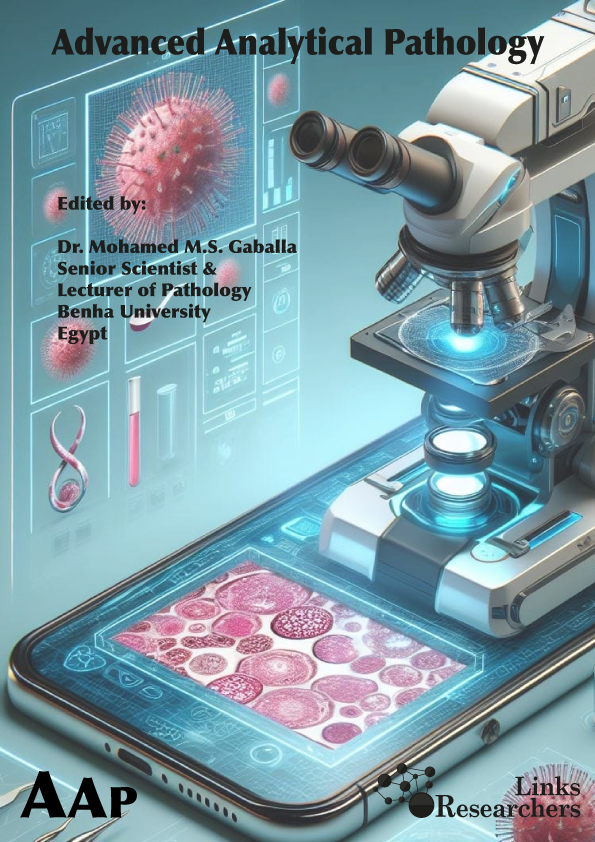Laila M. Fadda1, Nouf M. Al-Rasheed1, Iman H. Hasan1, Hanaa M. Ali2,3*, Nawal M. Al-Rasheed1,4, Musaed Al-Fayez5, Aly M. Ahmed5, Nada Almutlaq1, Nehal Qasem1 and Reem Khalaf1
Muhammad Zahid1, Muhammad Hamid Bashir1*, Bilal Saeed Khan1 and Muhammad Shahid2
Ayanda Opeyemi Isaac,1,* Oniye Sonnie Joshua2 and Auta Jehu2
Taghreed A. Hafiz1, Murad A. Mubaraki1*, Mohamed A. Dkhil2,3 and Saleh Al-Quraishy2
Rashid Ahmed Khan* and Muhammed Naveed
Zafar Waheed, Khalid Usman, Iftikhar Ali
Dilawar Hussain* and Abdul Mateen
Gökhan Kuş1,*, Hatice Mehtap Kutlu2, Djanan Vejselova2 and Emre Comlekci3
S. K. Mukhopadhyay and M. V. Santha Kumar
Dipak Mandal, Paramita Bhowmik, Pronobesh Halder and M. L. Chatterjee
Anil Sehajpal, Saroj Arora and Parminder Kaur
Zeenat Bano1,*, Sajid Abdullah1, Waqas Ahmad2, Muhammad Anjum Zia3 and Wardah Hassan1
Gamalat Osman1, Mansour Galal1, Abbas Abul-Ezz2, Ahmad Mohammed1, Mohammed Abul-Ela3 and Asmaa Mostafa Hegazy2
Soraya Khosravian Dehordi*, Abdolnaser Mohebbi and Kahin Shahanipour
Attia Anwar1, Sajida Malik2*, Zobia Usman1 and Sadia Chiragh3
Muhammad Hidayat Rasool*, Abuzar Muhammad Afzal*, Abu Baker Siddique*, Waseem Akram**, Muhammad Saqalein*, Madiha Basit* and Muhammad Farooq Tahir***
Qaisar Jamal1,Salman Ahmad1, Nazma Habib Khan1, Sobia Wahid1, Muhammad Ikram2, Sadia Rehman2, Syed Basit Rasheed1 and Akram Shah1,*
Umair Riaz1*, Muhammad Ali Kharal2, Ghulam Murtaza3, Qamar uz Zaman4, Sana Javaid4, Hina Ahmed Malik3, Humera Aziz3 and Zafar Abbas1
Tanzeela Riaz*†, Farah Rauf Shakoori, Syed Shahid Ali
Muhammad Babar Khawar, Nadeem Sheikh*
Tasleem Akhtar, Nadeem Sheikh*
Shagufta Andleeb*
Muddasir Hassan Abbasi1, 2, Noor Fatima1, Syed Shahid Imran Bukhari1, Asma Rashid khan3, Nadeem Sheikh2*
Zubair Ahmed#, Muhammad Farhanullah Khan, Habiballah Rana*
toxicity of crude methanol extract of whole plant of Haloxylon recurvum (Khar boti)
and a novel insecticide chlorantraniliprole. A serial concentration of extract i.e.,
1.2%, 2.4%, 3.6%, 4.8%, 6.0% and insecticide 0.00224%, 0.00448%, 0.00896%,
0.01792%, 0.02688%, respectively, were topically applied to adult S. zeamais.
Contact toxicity assayed by topical application showe...
Muhammad Shahzad Akbar, Muhammad Zeeshan Majeed* and Muhammad Afzal
Misbahullah, Shad Khan Khalil, Asim Muhammad*, Afza Tabassum and Shah Fahad
Hafiz Abdul Ghafoor*, Muhammad Afzal, Muhammad Luqman and Muhammad Zeeshan Majeed
Sadaf Rahim and Mudassar Iqbal*





















